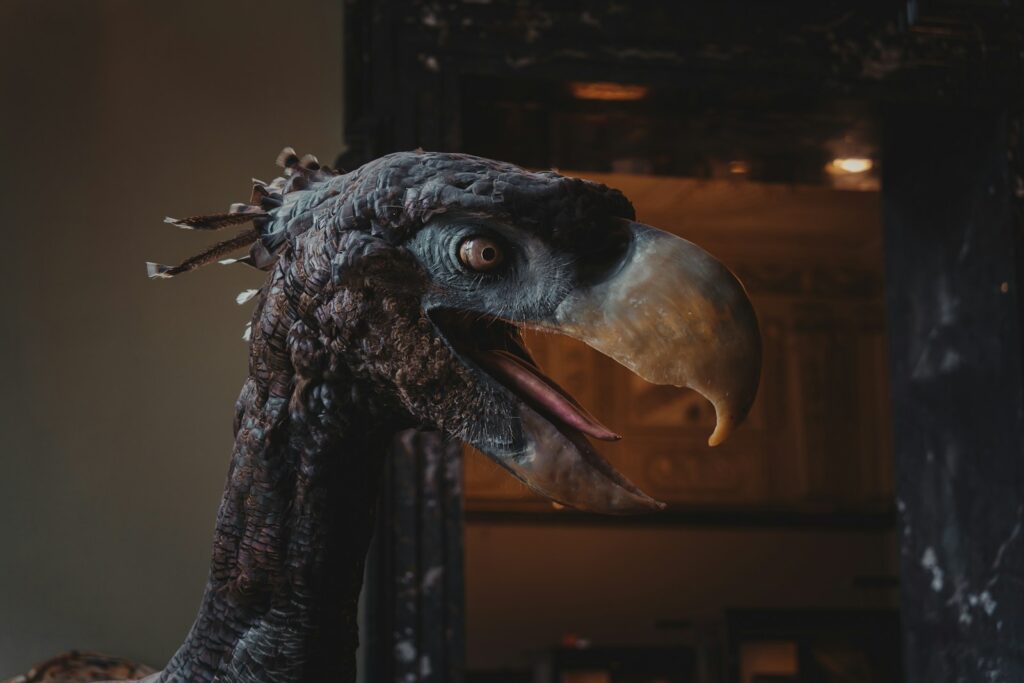When we look at a delicate hummingbird or a majestic eagle soaring through the sky, it might be difficult to imagine these creatures as descendants of the fearsome dinosaurs that once ruled our planet. Yet, the scientific evidence is overwhelmingly clear: birds are not just related to dinosaurs—they are dinosaurs. Modern birds represent the only surviving lineage of theropod dinosaurs, having evolved from small, feathered dinosaurs during the Jurassic period.
This remarkable evolutionary story spans over 150 million years and represents one of the most fascinating chapters in the history of life on Earth. Through careful study of fossils, DNA, and comparative anatomy, scientists have pieced together the compelling evidence that the approximately 10,000 species of birds alive today are living representatives of the dinosaur lineage that otherwise went extinct 66 million years ago.
The Evolutionary Connection Between Birds and Dinosaurs

The scientific understanding that birds evolved from dinosaurs has developed gradually over more than a century of research. The story begins in 1861 with the discovery of Archaeopteryx in Germany, a 150-million-year-old fossil that displayed characteristics of both dinosaurs and birds. This remarkable specimen possessed feathers and wings like modern birds, but also retained many dinosaurian features including teeth, a long bony tail, and clawed fingers.
Initially considered a transitional form between reptiles and birds, modern paleontologists now recognize Archaeopteryx as a primitive bird that shares numerous features with non-avian dinosaurs. The evolutionary relationship became increasingly clear in the 1970s when paleontologist John Ostrom revived the hypothesis of dinosaur-bird connections through his detailed studies of dromaeosaurids—small, agile predatory dinosaurs with numerous bird-like features.
Today, cladistic analyses consistently place birds within the theropod dinosaur group, specifically as a branch of maniraptoran dinosaurs, making them not just descendants but actual living dinosaurs themselves.
The Fossil Record: Bridging the Gap

The fossil record has been instrumental in establishing the dinosaur-bird connection, with a wealth of discoveries filling in what was once considered a significant evolutionary gap. Particularly important has been the treasure trove of exquisitely preserved fossils from China’s Liaoning Province, dating from approximately 130-120 million years ago. These specimens, including Sinosauropteryx, Caudipteryx, and Microraptor, reveal non-avian dinosaurs with unambiguous feathers and other bird-like characteristics.
The microraptor is especially fascinating as it possessed four wings—feathered fore and hind limbs that it likely used for gliding. The fossil record shows a clear progression from bipedal theropod dinosaurs to increasingly bird-like forms, with a gradual acquisition of avian features including wishbones (furcula), complex feathers, hollow bones, and eventually toothless beaks.
Rather than a single “missing link,” paleontologists have discovered dozens of transitional species that document this evolutionary transition in remarkable detail, creating a nearly continuous sequence from ground-dwelling dinosaurs to the flying birds we see today.
Feathers: Not Just for Birds
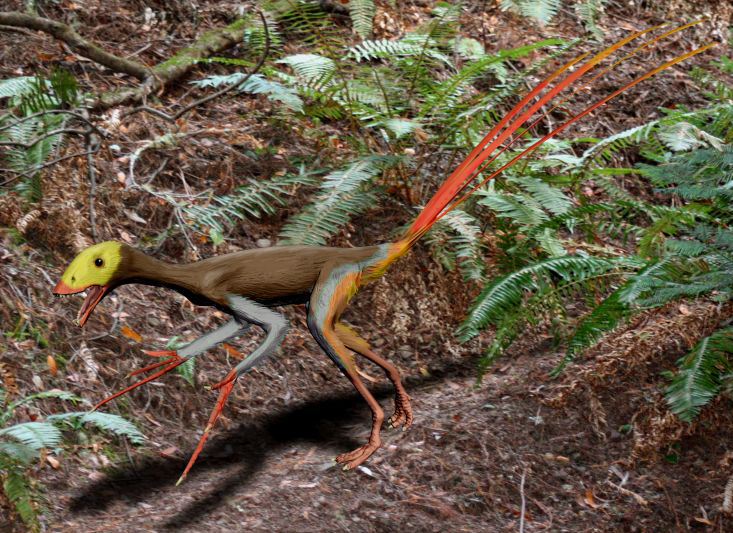
Perhaps the most iconic avian feature—feathers—turns out to be a dinosaurian innovation that predates the origin of birds by tens of millions of years. The discovery of numerous feathered non-avian dinosaur fossils has revolutionized our understanding of feather evolution and dinosaur appearance. Simple, filamentous feather-like structures have been found on dinosaurs as diverse as the early tyrannosaur Dilong and the herbivorous Kulindadromeus, suggesting that some form of feathery covering may have been widespread among dinosaurs.
These early feathers likely served functions unrelated to flight, such as insulation, display, or camouflage. More complex pennaceous feathers—with a central shaft and barbs—evolved in maniraptoran dinosaurs and were further refined in the lineage leading to birds. Microscopic studies of fossil feathers have even revealed preserved melanosomes, the cellular structures containing pigments, allowing scientists to determine the actual colors of some dinosaur feathers. This evidence conclusively demonstrates that feathers are not a bird innovation but a dinosaurian feature that birds inherited from their theropod ancestors.
Skeletal Similarities Between Birds and Dinosaurs

Beyond feathers, birds share numerous skeletal features with their dinosaurian ancestors that reveal their evolutionary heritage. Both birds and theropod dinosaurs possess a furcula (wishbone), a feature once thought to be unique to birds but now known to be widespread among theropods. The wrist bones of birds and certain dinosaurs show remarkable similarities, including a semi-lunate carpal (wrist bone) that allows for the folding motion used in the flight stroke.
Birds and their closest dinosaur relatives share a unique hip structure, three-toed feet, and hollow, pneumatic bones lightened by air sacs. These pneumatic bones, connected to an efficient respiratory system with unidirectional airflow, were present in various theropod dinosaurs before evolving into the highly sophisticated air sac system of modern birds.
The braincase structure of maniraptoran dinosaurs also shows bird-like features, including an enlarged brain with well-developed optical lobes. Perhaps most tellingly, birds and their closest dinosaur relatives share a unique growth pattern characterized by rapid development and sustained growth rates, a pattern distinct from that of other reptiles but characteristic of the theropod dinosaur lineage.
Behavioral Connections: Nesting and Parental Care

The behavioral similarities between birds and their dinosaur ancestors extend beyond skeletal features to include complex reproductive behaviors. Fossil evidence shows that many theropod dinosaurs, including oviraptorids and troodontids, constructed nests and brooded their eggs in a bird-like manner. Discoveries in Mongolia’s Gobi Desert have revealed oviraptorid dinosaurs fossilized while sitting on their nests, with their limbs arranged around a clutch of eggs in a posture nearly identical to that of modern brooding birds.
Microscopic examination of dinosaur eggshells has revealed porous structures similar to bird eggs, suggesting that dinosaur parents, like modern birds, may have incubated their eggs with body heat. Further evidence comes from preserved dinosaur nests containing multiple embryos at similar developmental stages, indicating synchronized hatching as seen in many modern bird species.
These shared reproductive strategies—nest building, egg brooding, and parental care—provide compelling behavioral evidence for the evolutionary continuity between non-avian dinosaurs and birds, suggesting that many behaviors we associate with birds today actually evolved in their dinosaur ancestors.
Breathing Like a Dinosaur: The Avian Respiratory System
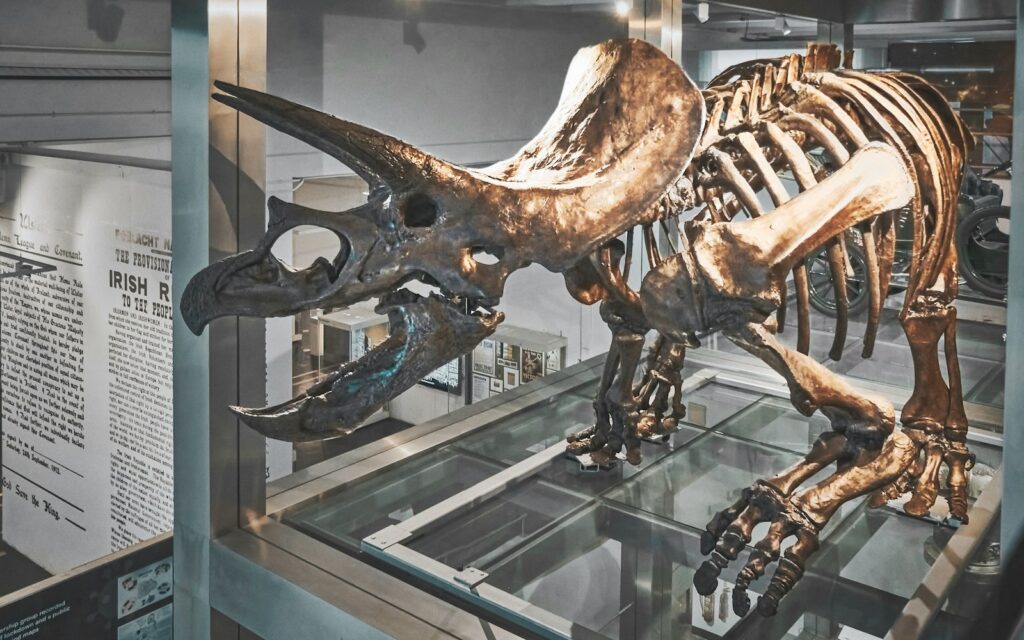
One of the most remarkable shared features between birds and dinosaurs is their highly efficient respiratory system, which differs significantly from that of other vertebrates. Modern birds possess a unique system of air sacs that facilitate unidirectional airflow through their lungs, allowing for continuous oxygen absorption even during both inhalation and exhalation.
This system is far more efficient than the bidirectional breathing of mammals and most reptiles. Paleontological evidence, including the presence of pneumatic foramina (holes for air sacs) in vertebrae and hollow bones, indicates that many non-avian theropod dinosaurs possessed a similar respiratory system. CT scans of dinosaur fossils have revealed internal bone structures consistent with air sac systems, particularly in theropods closely related to birds.
The evolution of this efficient respiratory system likely provided dinosaurs with high metabolic rates and the ability to remain active for extended periods—advantages later exploited by birds for powered flight. This sophisticated breathing apparatus represents another crucial piece of evidence establishing birds as living dinosaurs, having inherited and refined a respiratory system that first evolved in their dinosaurian ancestors.
Egg-Laying and Reproduction: Dinosaurian Heritage

Birds’ reproductive biology provides additional evidence of their dinosaurian heritage, particularly in how they produce and incubate eggs. Unlike most reptiles that produce eggs with leathery shells, birds lay hard-shelled eggs—a characteristic they share with their dinosaur ancestors. Fossil dinosaur eggs show microstructural similarities to bird eggs, with both having multiple layers, including a mammillary layer and a prismatic layer.
Additionally, both dinosaur and bird eggs contain a single opening through which the embryo receives oxygen, rather than the multiple pores found in crocodilian and other reptile eggs. Microscopic studies of fossil dinosaur eggshells reveal growth lines indicating that dinosaurs, like birds, likely formed and laid their eggs rapidly rather than retaining them in the body for extended periods as many reptiles do.
Perhaps most remarkably, studies of dinosaur nests have shown that many theropods arranged their eggs in partially buried circular clutches with the eggs oriented in circular or spiral patterns—arrangements strikingly similar to those of ground-nesting birds today. These reproductive similarities represent yet another line of evidence confirming that birds are living dinosaurs.
Surviving the Mass Extinction: How Birds Persisted
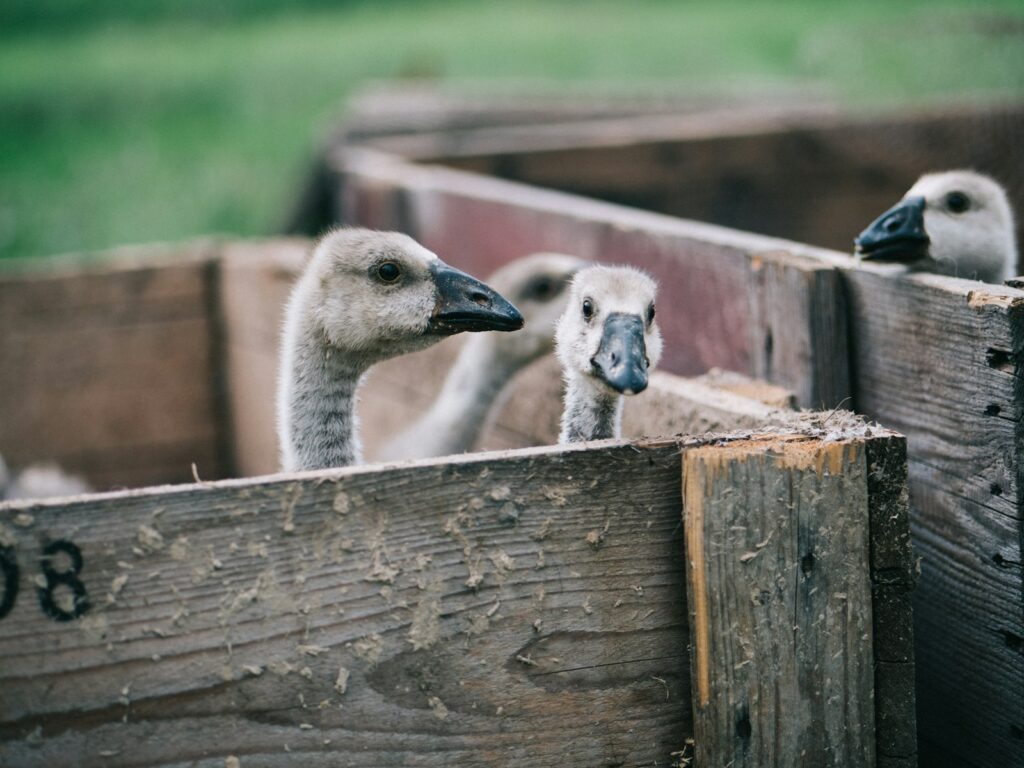
While the asteroid impact that occurred 66 million years ago wiped out all non-avian dinosaurs, the avian dinosaurs—birds—managed to survive this catastrophic event and subsequently diversified into thousands of species. Scientists have proposed several hypotheses to explain this selective survival. Birds’ smaller body size may have been advantageous, as smaller animals generally require less food and can hide more effectively in sheltered microhabitats.
Their seed-eating abilities likely proved crucial when plant life was devastated, as seeds represent a high-energy food source that can remain viable for extended periods. The arboreal (tree-dwelling) habits of many early birds may have protected them from the immediate effects of the impact, including heat pulses and tsunamis. Additionally, the sophisticated respiratory system inherited from their dinosaur ancestors might have helped birds cope with atmospheric changes following the impact.
Recent genomic studies suggest that the bird lineages that survived the extinction event already possessed relatively large brains and enhanced cognitive abilities compared to other dinosaurs, potentially allowing them to adapt more rapidly to changing conditions. This remarkable survival story underscores how birds represent the continuation of the dinosaur lineage despite the mass extinction that claimed their larger relatives.
Molecular Evidence: DNA and Proteins

While fossilized DNA from dinosaurs remains elusive, molecular studies provide additional evidence supporting the dinosaur-bird relationship. Comparative genomic analyses consistently place birds as the closest living relatives to crocodilians, forming the group Archosauria—exactly as predicted by fossil evidence placing birds within dinosaurs, which are archosaurs. Protein sequencing from exceptionally preserved dinosaur fossils has yielded results consistent with the predicted evolutionary relationship between dinosaurs and birds.
In a groundbreaking 2007 study, scientists extracted and sequenced collagen proteins from a 68-million-year-old Tyrannosaurus rex fossil, finding that the protein sequences most closely matched those of modern birds, particularly chickens. This molecular evidence directly corroborated the morphological data from the fossils.
More recently, preserved cartilage from the dinosaur Hypacrosaurus was found to contain cellular structures resembling nuclei with chemical signatures consistent with DNA, though not the DNA sequences themselves. While ancient DNA extraction from dinosaur fossils remains challenging due to degradation over time, the available molecular evidence aligns perfectly with fossil, anatomical, and developmental evidence in establishing birds as living dinosaurs.
Growth and Development: The Dinosaur Way

Birds develop in ways that reflect their dinosaurian heritage, with growth patterns that differ significantly from other living reptiles but match what we know about dinosaur development. Like their dinosaur ancestors, birds grow extremely rapidly compared to reptiles of similar size, often reaching adult size within weeks or months rather than years. Microscopic studies of dinosaur bones reveal growth rings similar to those in bird bones, indicating sustained rapid growth with periodic slowdowns—a pattern distinct from the slower, more continuous growth of most reptiles.
Birds and their closest dinosaur relatives share a unique bone tissue called fibrolamellar bone, which enables rapid growth and is rare among reptiles but common in dinosaurs and birds. The embryonic development of birds also shows dinosaurian characteristics, including the initial formation of teeth in some bird embryos (such as chickens) that are later resorbed before hatching—a developmental echo of their toothed dinosaur ancestors.
Studies of bird embryos reveal that their wing digits develop from digits 1, 2, and 3 of the ancestral five-fingered hand, exactly matching the three fingers retained in theropod dinosaurs. These developmental patterns provide compelling evidence that birds grow and develop according to their dinosaurian heritage.
Modern Birds: The Diverse Legacy of Dinosaurs

With approximately 10,000 extant species, modern birds represent an extraordinarily successful and diverse dinosaur lineage that has adapted to virtually every terrestrial and many aquatic environments on Earth. From the tiny 2-gram bee hummingbird to the 156-kilogram ostrich, from the deep-diving penguins to the high-flying bar-headed geese that cross the Himalayas, birds showcase the remarkable adaptability of the dinosaur body plan.
This diversity results from extensive adaptive radiation following the end-Cretaceous mass extinction, with birds evolving specialized features for various ecological niches while retaining their fundamental dinosaurian characteristics. The diversity of modern bird beaks—from the massive crushing bill of the macaw to the delicate nectar-feeding apparatus of sunbirds—parallels the diversity of skull morphologies seen in their dinosaur ancestors. Similarly, the various modes of flight, from the soaring of albatrosses to the hovering of hummingbirds, represent evolutionary refinements of locomotor capabilities that began in ground-dwelling dinosaurs.
Modern birds thus serve as a living laboratory for understanding dinosaur biology, with each species offering insights into how the dinosaur lineage has continued to evolve and adapt over millions of years since the extinction of their non-avian relatives.
Dinosaur Behaviors in Your Backyard: Bird Watching with New Eyes
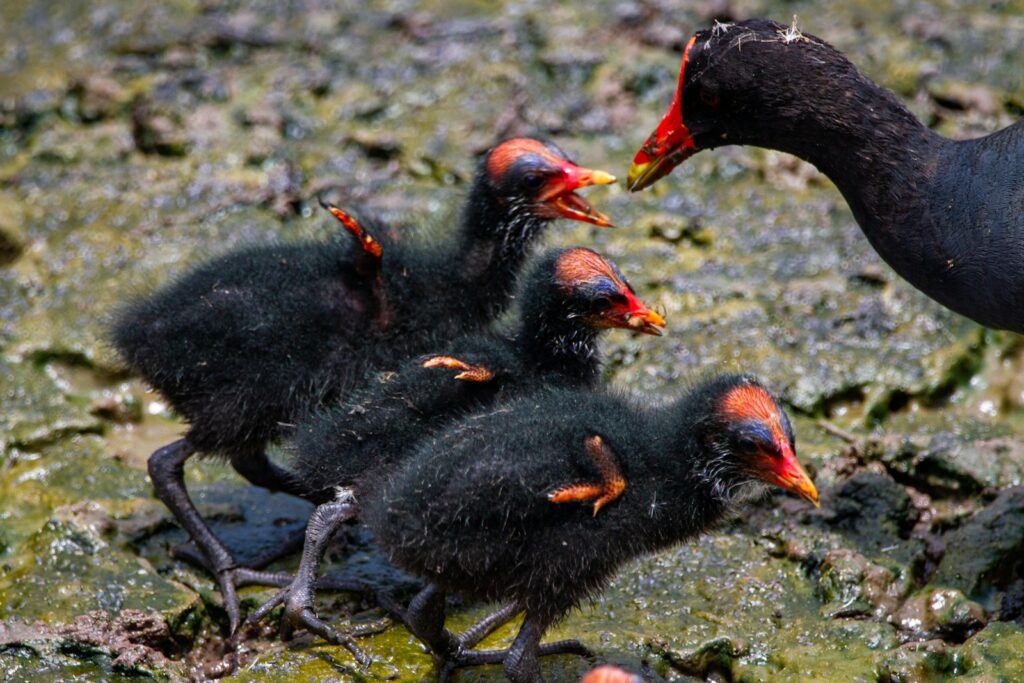
Understanding birds as living dinosaurs transforms ordinary bird watching into an extraordinary window into prehistoric behavior. When a robin pulls a worm from your lawn, it’s employing predatory behaviors inherited from carnivorous theropod ancestors, including binocular vision, rapid head movements, and precise beak strikes. The territorial displays of male birds, from the elaborate dances of manakins to the spectacular plumage of peacocks, likely have roots in similar competitive displays performed by their dinosaur ancestors.
Fossil evidence suggests that many dinosaurs, particularly those most closely related to birds, possessed colorful feathers and engaged in complex display behaviors. When birds build nests, they’re continuing a behavior documented in numerous dinosaur fossils, while their devoted parental care reflects childrearing strategies that evolved in dinosaurs millions of years before the first true birds appeared.
Even the familiar sight of birds perching on branches represents an adaptation that began in arboreal dinosaurs such as the Microraptor. By observing common bird behaviors—flocking, territorial defense, courtship displays, nest building, and parental care—we’re witnessing behaviors with deep evolutionary roots in the Mesozoic Era, offering a direct connection to the age of dinosaurs in our own backyards and neighborhoods.
The Scientific Consensus: Birds Are Dinosaurs

The classification of birds as dinosaurs represents one of the most robust and widely accepted conclusions in modern paleontology. This scientific consensus has developed through decades of multidisciplinary research incorporating evidence from paleontology, comparative anatomy, embryology, molecular biology, and evolutionary developmental biology.
The technical term for this relationship is that birds are nested within the clade Dinosauria, specifically within the theropod group Maniraptora, making them as much dinosaurs as Tyrannosaurus or Triceratops. The strength of this conclusion comes from hundreds of shared derived characteristics (synapomorphies) that link birds to other dinosaurs, including over 100 features shared exclusively with theropod dinosaurs. Major scientific organizations, including the Society of Vertebrate Paleontology, explicitly recognize birds as dinosaurs in their technical classifications.
While formerly described as “avian dinosaurs” to distinguish them from “non-avian dinosaurs,” both groups are equally dinosaurs in the same way that both flying and flightless birds are equally birds. This classification isn’t merely semantic—it recognizes the evolutionary reality that birds represent the continuation of the dinosaur lineage that has persisted for over 230 million years and continues to thrive today.
Conclusion: Living With Dinosaurs Every Day

The scientific evidence establishing birds as living dinosaurs invites us to see the natural world with new appreciation and wonder. When we hear birdsong at dawn, witness a falcon’s dive, or observe a hummingbird’s hover, we’re experiencing the living legacy of the dinosaur lineage that has continued unbroken for more than 230 million years. While the

